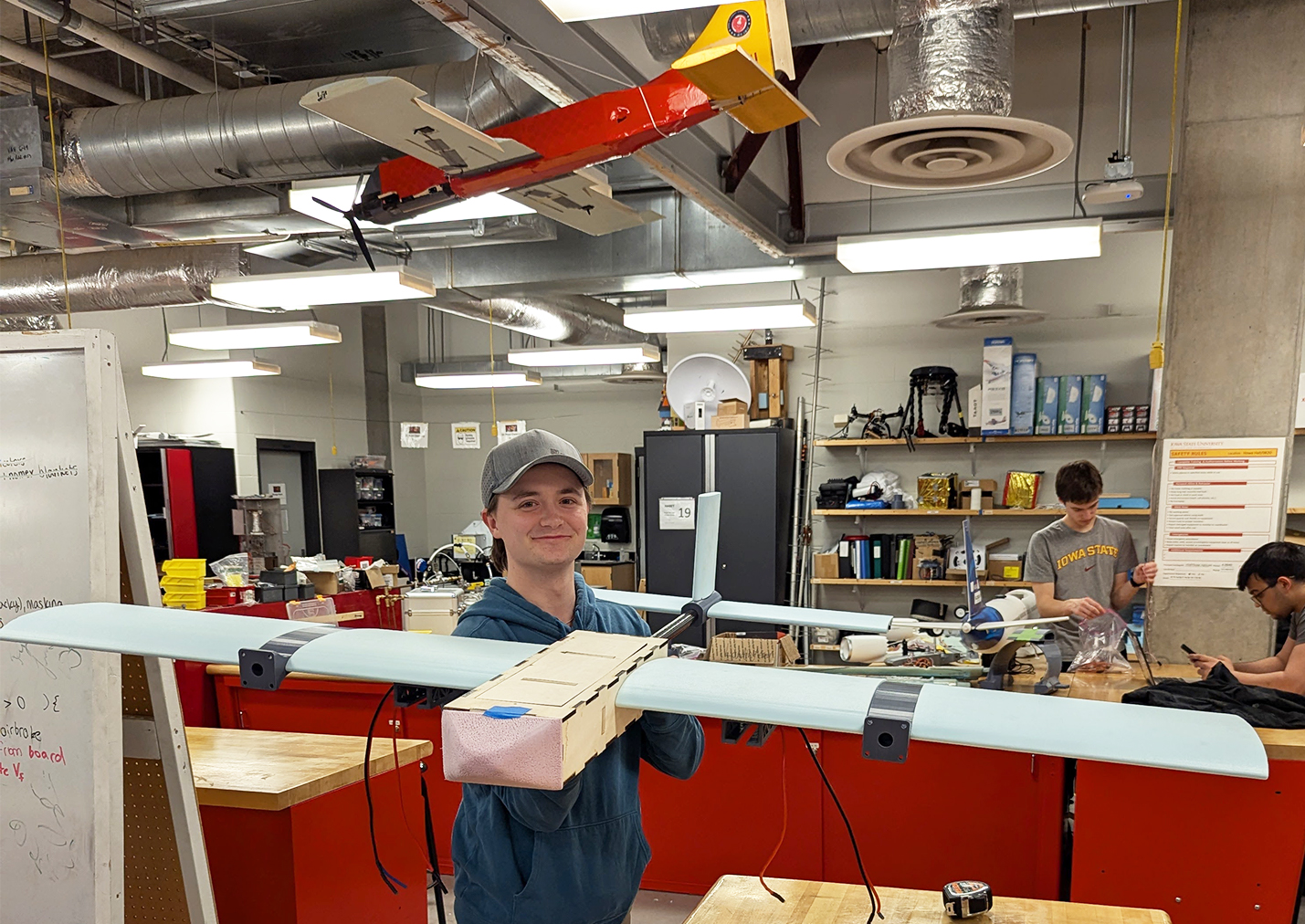The M:2:I (Make to Innovate) team Design/Build/Fly (DBF) is perfecting and finalizing the latest design of a hand-built plane and autonomous drop glider to compete in the annual DBF competition of the American Institute of Aeronautics and Astronautics (AIAA) April 10-13. Students will travel to Tucson, Arizona to compete with over 100 teams from all over the world.
AIAA sponsors the event that inspires teams of engineers to work together to develop a radio-controlled aircraft that can effectively complete a set of mission goals. This competition encourages collaboration, creativity, and innovation. “The goal is for teams to demonstrate a balanced design that possesses good flight handling qualities with practical and affordable manufacturing requirements while demonstrating high vehicle performance,” says team lead Ian Luedke.
The objective of this year’s test is to execute a program with an aircraft designed to fly its own set of requirements, plus release a smaller glider plane to be deployed at an altitude of 200-400 feet above the ground.
Checking all the boxes
The team has completed the design phase of the main craft and has been constructing and test-flying both it and the glider.
The Iowa State effort this year will feature a twin-engine aircraft designed with a “twin tractor” design and a “tail dragger” landing style. In a twin tractor design, the engines are positioned at the front of the aircraft, powering the plane forward — like a tractor. A tail dragger landing gear features a design where the landing gear is positioned in front of the aircraft’s center of gravity, under the wings. A small wheel supports the tail, which rolls on the ground. There is no nose landing gear in a tail dragger design.
Plenty to compete for
Cash prizes are awarded for top finishers in the competition, with $3,000 for first place, $2,000 for second and $1,500 for third. The winning team may be invited to present their design at an AIAA conference. Written information must also be compiled and submitted and the team with the best report score will receive a $100 prize from the AIAA Design Engineering Technical Committee.
The team is “finally seeing all of our hard work come to fruition,” Luedke says.
